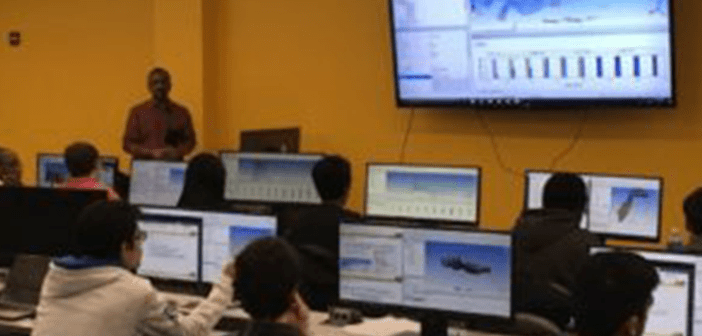Engineering colleges need to get on the simulation bandwagon.
Simulation is a necessity for the automotive, aerospace, consumer goods, electronics, industrial and even health care industries.
So, why do so many engineering colleges not teach the basics of finite element analysis (FEA) or computational fluid dynamics (CFD) software?
I cannot stress enough the importance of learning and understanding simulation tools based on my experience as a recent mechanical engineering grad.
When facing the industrial job market, I can use the simulation skills I picked up from ANSYS to stand out among thousands of applicants. I hope engineering colleges understand the importance of bringing simulation into the curriculum. Students need to generate an industry-ready talent for these tools.
How Students Can Learn Simulation in an Engineering College
Deformation of a wall mounting bracket.
It doesn’t take much to get engineering college students interested in simulation.
Perhaps an exercise as simple as calculating the deformation of a wall mounting bracket by hand and then again through simulation?
Once these students see the power and speed of simulation it could pique their interest.
This can only be done when professors take the time within their lectures to seed the idea that simulation can solve problems. This could trigger students to probe into the meaning of those colorful pictures — it can help them explore simulation resources and work on it as a new skill.
From here, the engineering student just needs to choose a simulation software. I chose ANSYS. ANSYS gave me — and any other students — the ability to:
Effectively, students have access to similar or equivalent resources to those they’d be introduced to on the job. However, instead of learning these lessons during three-month employment probation, they are learning it in the safety of their engineering college.
ANSYS played a vital part in educating me about the simulation industry and shifted my focus toward FEA and CFD. I suggest students start with a self-paced online course like
A Hands-on Introduction to Engineering Simulations. It is sponsored by ANSYS and taught by Dr. Rajesh Bhaskaran from Cornell University.
How Simulation Gives Engineering College Students a Leg-up in Industry
The simulation tools I used improved my studies, capstone projects and early career.
For example, while enrolled in an engineering college, I helped an athletic firm improve the strength and durability of a patented lacrosse stick. I then worked with FloDesign Sonics to develop ultrasonic cell therapy devices to concentrate, wash and separate distinct types of cells.
Generally speaking, most engineering capstone projects can benefit from the insight into the simulation in the verification and validation stages. Familiarity with simulation can help engineering college students gain an edge over their peers because they’ll have a mathematical and visual understanding of simulation. This understanding can add value to their project and curriculum vitae (CV).
Any academics or students at an engineering college looking to follow my lead should access
ANSYS’ Free Student Software Downloads.
source: https://www.ansys-blog.com/engineering-colleges-need-simulation-classroom/





